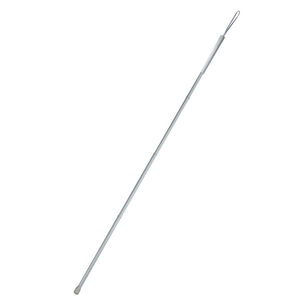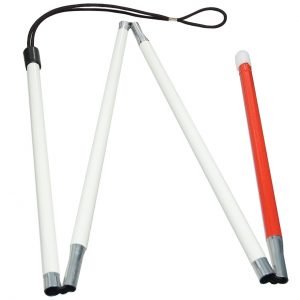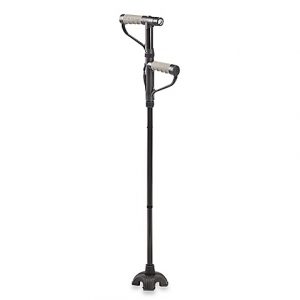You’ve probably seen them and you probably are aware of the basics of what they do but as my vision deteriorates, the white cane lays ahead of me in this adventure like an impossible mountain to climb.
Accepting the fact that i’ll be “noticeable” visually impaired to the world is a daunting reality and after a lifetime of playing my visual impairments off as clumsy or as a joke, the time has come for me to accept the reality that I am legally blind. It’s time to utilize a the white cane to navigate safely during the dark hours of the day or in new environments.
It sucks.
As I move toward reality, learning about the options that are out there is important and I thought it would be a great topic to discuss. Before diagnosis, I had no idea there were multiple types of canes for the visually impaired and embracing the forthcoming reality has lead to education.
For my case, my peripheral vision has failed miserably, on top of my extreme myopia. Due to the Retinitis Pigmentosa, the Rods and Cones in my retina have died which cause night blindness. A dimly lite room to you is like walking into a black home for me. Dusk to you is like the pitch black of night to me.
Types of Canes
There are really three types of canes that can help someone with a visual impairment. Each one is a tool to not only help navigate safely but also to make others aware that you can’t see well and to hopefully, give the user of the cane a bit more understanding and room to navigate.
Long canes provide the most protection to a blind or visually impaired person. The cane user uses the cane as a probe, which will give information about what lies ahead.The cane will detect drop-offs, stairs, objects, grass lines, walls and openings. The “tap, tap, tap” you may have heard before comes from this cane and ultimately, they are the most useful tool for someone with sever vision loss. These canes come in a variety of colors, materials and styles today but the most obvious and common is the standard white which helps others notice it and be aware.

Identification canes or “ID canes” provide minimal protection, and are used by people with slight to moderately impaired vision, depending on the visual field. The person can use it selectively to probe the terrain, but the cane’s primary function is to let the public know that the carrier has trouble with his or her vision. The ID cane is cool because it can fold up and be tucked away if needed. It allows for easy transport and can even be put away for situations it’s not needed.
For my first cane, this is what I will start with. The option of not “having” to have it out in front of me the entire time is extremely attractive sounding and I hope that the use of it will help me navigate unfamiliar areas with a bit more confidence.

Support canes provide a similar function as the identification canes. They identify a person as visually impaired and give some information about the environment.Travelers with slight to moderate visual impairment use the support cane to aid with balance or strength in the legs. These would be standard.

Of course there are tons of different kinds of tips and attachments for these mobility canes for the visually impaired and i’m sure as I begin my use, i’ll find the best fit. So here we go in the world of being visually impaired to the world. Here’s to opening the door on acceptance, independence and hopefully limiting the amount of things I run into and fall off.
AO